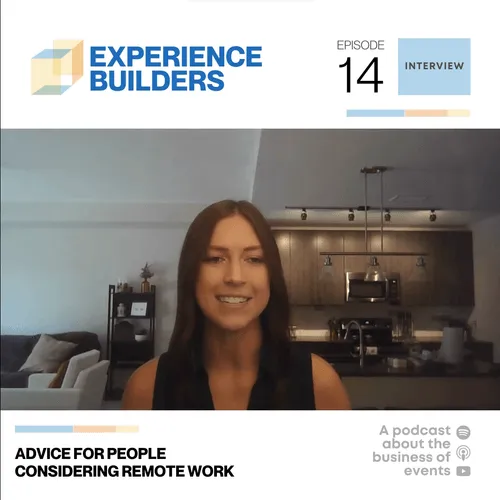By Ray Smith, Exhibit City News
A resolution has been reached with general contractor Freeman to revise the language of rigging regulations issued in October that requires an engineering stamp every year at each event venue for exhibitors hanging structures from convention hall ceilings.
Through collaborative efforts of ESCA, EACA and EDPA, revisions were made such that all stamps are accepted, regardless of location and year, provided no modifications were made to the structure.
“We’re pleased to share that Freeman has revised their regulations regarding engineering stamps,” Jessica Sibila, executive director of Exhibitor Advocate, states in a Feb. 1 post on LinkedIn.
“The revised regulation maintains the safety of our show floors without adding unnecessary cost and burden to exhibitors. The resolution of this issue reaffirms the power of partnerships and the solutions that can be realized when we collaborate as an industry,” she adds.
Freeman’s revised language states that a structure’s engineering stamp is valid if the following requirements are met:
- The engineering stamp is issued by structural or civil engineering firm in the United States.
- The structure has not been modified from the time of the original design stamp.
- Venue, municipality, or state codes will take precedent over Freeman standards.
UNNECESSARY STAMP
A video wall came crashing down at a tradeshow at Mandalay Bay Convention Center in 2019, and thank the gods of fate, it happened after show hours. Nobody was injured. Or worse.
These types of accidents spurred Freeman to crack down on rigging regulations, requiring an engineering stamp in each state for lights, signage and other hanging structures weighing over 250 pounds.
Exhibitors, however, balked at the new rule.
“Many exhibitors have hanging signs that already have an engineering stamp that is recognized nationally, making the state-specific stamp unnecessary,” Sibila says in her Exhibitor Advocate blog. “These stamps do not expire. As long as there is no structural change it is unnecessary to have the element restamped every year.”
Rigging regulations vary from state to state, and from venue to venue. Building standards have been upgraded for newly constructed convention centers and exhibit halls, whose ceiling beams and trusses can withstand more weight.
The initial issue with the new rule started with a late notice for the RSNA (Radiology Society of North America) show in November, says Jim Wurm, executive director of Exhibitor Appointed Contractors Association. An addendum concerning the new rigging requirements was sent to exhibitors three weeks prior to move-in.
Exhibitors raised a second issue that the changes had been informed by a recommendation from the American National Standards Institute that was written in 2017.
“Gratefully, conversations have taken place with ESCA as well as Freeman, who initiated the changes, to clarify the new protocol and accommodate concerns among those exhibitors who already have engineering stamps and who have made no structural change to hanging signs,” Wurm says.
IMPROVED SAFETY
Revisions to the existing regulations are primarily aimed at enhancing safety measures in the tradeshow industry. That’s understandable, in light of accidents where structures had no stamps at all.
Julie Kagy, executive director of Exhibition Services and Contractors Association, emphasizes that these rules are not entirely new. They’re simply refining existing guidelines to ensure everyone’s safety.
“Initially, there were challenges with the guidelines, particularly concerning timeline requirements and location-based stamps,” Kagy confirms, but that’s been resolved.
“But all structures will need to have an engineering stamp,” she adds. “We will be working to ensure these become the industry standard for all events. While certain municipalities and venues may have variations, our goal is standardization and consistency.”
Kagy praised Freeman’s “proactive approach” in listening to exhibitor concerns and fostering a smooth transition for stakeholders.
“While adjustments may pose initial challenges, these revisions signify progress towards a safer environment for all involved in the tradeshow industry,” she says. “We encourage these conversations and feedback loops to help us arrive at the best practices and standards for all.”
REVISED STANDARDS
Freeman is focused on creating “meaningful moments, delivered safely,” says Chris Schimek, Freeman’s chief operating officer for exhibit services. Freeman updated its policies for overhead structures to be fully compliant with the American National Standards Institute.
“Our commitment to maintaining safe and secure events for our customers, attendees and employees is paramount to our business and the industry at large,” Schimek says. “After further conversations with our partners and customers, we have since revised our standards.”
In the revised standards, which are available in show-specific exhibitor kits, Freeman will continue to require engineering stamps for overhead structures and tie-offs. Engineering stamps issued by structural or civil engineering firms in the United States will be accepted if the structure has not been modified from the time of the original design stamp, and as long as the venue, municipality, or state codes do not supersede Freeman guidelines. These specific codes will always take precedent over Freeman standards.
With regard to hanging signs and graphics, any sign or hung structure over 250 pounds will require a secondary lifting device. When facilities have more stringent weight guidelines, Freeman will adhere to the facilities requirements.
BUDGET BUSTER
Rising costs are increasingly cited as the No. 1 issue for exhibitors in today’s tradeshow industry. They’re questioning the value of shows, downsizing display booths, cutting staff, even discontinuing participation altogether. When a rule like this is implemented, it has overriding cost implications to the exhibitor, Sibila emphasizes.
Rigging expenses are calculated according to several criteria, including the number of riggers needed, the hours to hang signs and lighting, the time of day when it needs to be done, equipment required, and rates for installation on the show floor.
“If we haven’t planned for the expense, it can blow our budget,” Sibila says. “On top of other unpredictable costs associated with the tradeshow, these expenses can dramatically affect an exhibitor’s budget, not just for the show, but for their entire business.”


























